You can make your own wild sourdough starter in 6 easy steps. Here’s how to capture wild yeast, plus how to maintain and use your starter.
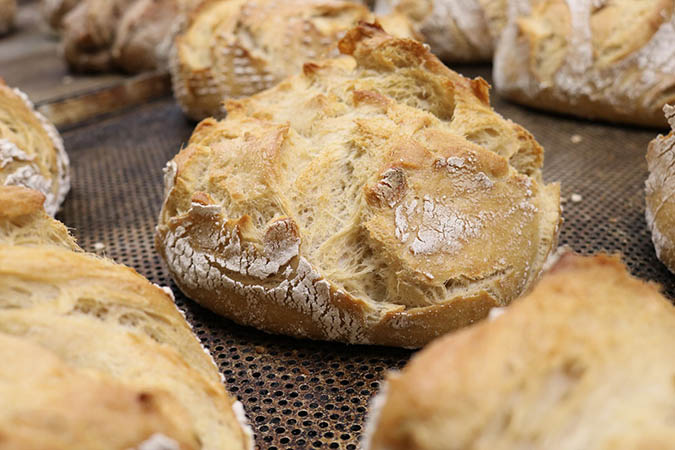
How to Make Wild Sourdough Starter
For those who want to improve their connection with the world’s wild side, changing your diet is a smart place to start. While most of us know the appeal of making meals from garden-fresh fruits and vegetables, it’s also possible to become more self-sufficient with your baking projects by cultivating a wild sourdough starter.
This ancient, highly prized method of bread making harkens back thousands of years and takes advantage of natural fermentation to develop a starter that evolves in flavor every time you use it.
You May Also Enjoy:
“9 Simple, Effective Probiotics You Can Make at Home”
With a time investment of no more than 5 minutes a day for a little over 2 weeks, you can create a wild sourdough starter with a taste and texture that’s reflective of the natural yeasts surrounding your region.
But what is sourdough bread—and how does the process work? Let’s break it down below.
What Is Sourdough Bread?
Before we dive into the details behind collecting wild yeasts, let’s look closer at the basics of sourdough bread.
Put simply, it is a fermented form of dough that’s used in place of fresh yeast. You can make sourdough with a natural leaven, or a mixture of flour and water that is slowly broken down by natural enzymes and beneficial bacteria like those in the genus lactobacillus that transform the simple sugars into lactic acid.[1]https://www.culturesforhealth.com/learn/sourdough/sourdough-introduction
You May Also Enjoy:
“How to Make Unlimited Bread With That Last 1/2 Packet of Yeast”
“10 Incredibly Powerful Antiviral Herbs”
Get TGN’s New Immunity Support Kit at an Incredible Discount
In the right conditions, the yeast will multiply in size upward of 10 times in just 12 hours. That’s because lactobacilli have a symbiotic relationship with wild yeast, ultimately meaning that combining the two produces carbon dioxide bubbles that create an airy bread loaf.
The process creates a tangy, complexly flavored bread.
A Quick History of Sourdough

By many estimates, sourdough bread might be the first type of bread ever baked.
Fermented foods have been a favorite for tens of thousands of years. The ancient Egyptians captured wild yeasts to brew their beer and leaven their bread, and bakers maintained active starters in pots by feeding the bacteria inside with flour and water every few days.[2]https://www.kitchenproject.com/history/sourdough.htm
Sourdough gained extraordinary popularity during the California Gold Rush, as the pots of starter culture that the miners brought with them were almost as valuable as the gold they were digging up. San Francisco today still has a thriving sourdough bread culture, and some bakeries still rely on the same starters that were first created in the 1840s.
You May Also Enjoy:
“How to Peel 20 Cloves of Garlic in 8 Seconds”
The active ingredients in yeast were first isolated in the 1860s, and it quickly transformed the process of home baking. Sourdough fell out of favor, but it’s enjoying a resurgence today as more bakers reconnect with its nuanced flavor profile and simplicity.
It’s possible to use a kit or existing starter to begin your sourdough, but the most rewarding process comes from developing the starter yourself from wild yeasts.
6 Benefits of Sourdough Bread
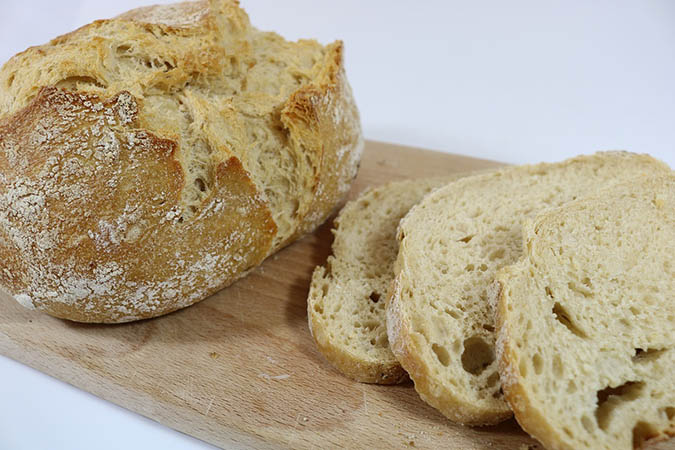
These days, most bread has a sweet, unassuming flavor profile that makes it little more than a vessel for the ingredients you layer on it. Why should you consider switching to sourdough instead? The bread has some impressive health benefits:
Better for Gluten Sensitivities
For those who struggle with digesting regular bread, sourdough is easier on the system.[3]https://glutendude.com/not-gluten-free/is-sourdough-bread-gluten-free That’s because the bacteria within the dough increase the amount of lactic acid within it, which makes it easier for your body to break down gluten, while also enhancing the absorbability of the vitamins and minerals within it.
Doesn’t Boost Blood Sugar
Much of the carbohydrate content within wheat is consumed by the bacteria found in sourdough before the loaf lands on your table, which means that it has a lower glycemic index. In other words, less sugar gets released into your bloodstream when you eat it. This prevents blood sugar from spiking and lowers your risk of diabetes.
Easier on the Digestive System

Those with intestinal issues like Irritable Bowel Syndrome or Celiac Disease might find that sourdough bread is easier to digest, as the wild yeasts and natural bacteria predigest the starch content.
Long Shelf Life
Thanks to its the naturally occurring acetic acid (vinegar), sourdough bread has a longer shelf life than most other bread varieties.[4]https://scialert.net/fulltextmobile/?doi=biotech.2008.413.417
Associated with Longer Lifespans
According to researches at the University of Italy, sourdough bread is a regular part of the diets of Italians living in a “blue zone,” meaning that a high percentage of the population lives to 100.[5]https://www.today.com/health/sardinias-mediterranean-diet-10-foods-lengthen-your-life-t13951
Culinarily Innovative
Sourdough bread might be simple in concept, but the process of fermenting yeast produces an endless variety of flavors, which is why no two loaves of sourdough ever taste the same. Older starters become more complex with time, and some have been in production for over a century.
How to Make a Wild Sourdough Starter
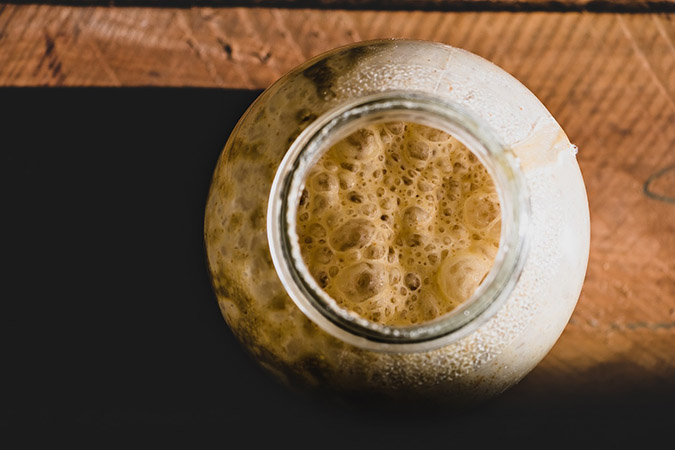
You likely need little more convincing to add this chewy bread to your diet. But, buying sourdough in artisan bakeries gets expensive, and there’s no guarantee it was made the traditional way.
Thankfully, it’s a simple process to make and bake with homemade wild sourdough starter, once you learn the underlying process. All that’s needed to get started is flour, water, and regular yeast, though the most interesting results come from collecting wild yeast instead.
You May Also Enjoy:
“How to Make Homemade Yogurt: Easy, Inexpensive, and the Healthiest You’ll Ever Eat”
While it’s simpler to bake sourdough from standard yeast, wild yeasts are where the magic happens. These microscopic fungi[6]https://www.geniuskitchen.com/recipe/sourdough-pizza-crust-98733 are present almost everywhere, though they tend to collect on sweetly scented fruits and plants—particularly on shaded bushes, vineyards, and fruit trees.
Catching and using wild yeasts sounds complicated, but it’s a process humans have been following for thousands of years. If you have the patience to commit to a little over 2 weeks of prep time to try it for yourself, you’ll be surprised at how rewarding it can be.
6 Steps to Capturing Your Own Wild Sourdough Starter
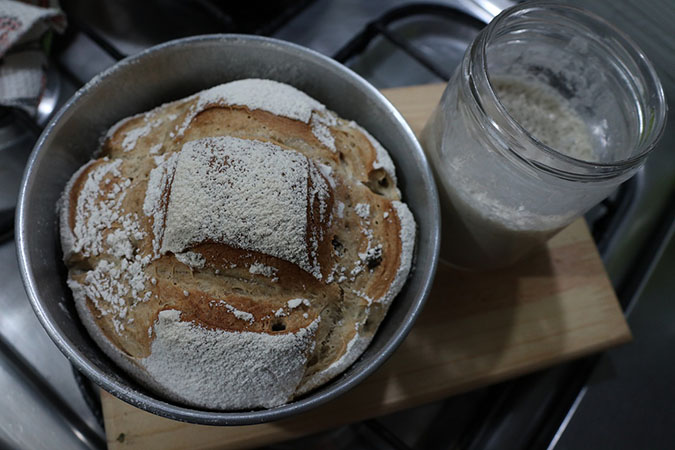
While there are dozens of ways to make a wild sourdough starter, one tried-and-true method is as follows:
- First, commit to securing your starter yeast during a time of year when the temperature doesn’t fall below 70 degrees F (21 deg C). Wild yeasts don’t thrive in colder temperatures, so you aren’t likely to be as successful.
- When the temperature is right, collect organic wheat flour, filtered water, and a half gallon-sized mason jar. Committing to organic is best. Otherwise, you run the risk of having contaminants within your dough.
- Mix equal parts water with the flour (a quarter cup of each is ideal) and pour the mixture into the half-gallon jar. Cover it with a breathable cloth that’s secured with a rubber band, and place it outside in a shaded place under a bush or tree.
- Over the next 9 days, add a quarter cup each of water and flour to the jar, securing the fabric in place after each addition. Within a few days, you should notice some bubbling on the surface, as well as a yeasty scent. If these signs don’t develop and the flour separates from the water instead, you likely aren’t collecting any yeast and should restart the process in a new location.
- If things have progressed to the point of bubbles and a sour, fruity scent by the tenth day, you’re ready to bring the mixture indoors. Pour the wild sourdough starter into a fresh jar and place it in the fridge.
- Continue to feed the starter a quarter cup of water and flour each day for seven days, putting it back in the fridge after each feeding.
By day 17, your wild sourdough starter is ready to be used. There are endless recipe options for baking sourdough-flavored breads, soft pretzels, pancakes, pizza crusts, and anything else that inspires you. Beyond classic bread flour, you can experiment with rye, whole wheat, and gluten-free flour, as well.
Some people also add milk or small pieces of potato to their starters. So long as you use just half the starter or less each time, you can continue to keep it alive.
8 Recipes for Using a Wild Sourdough Starter
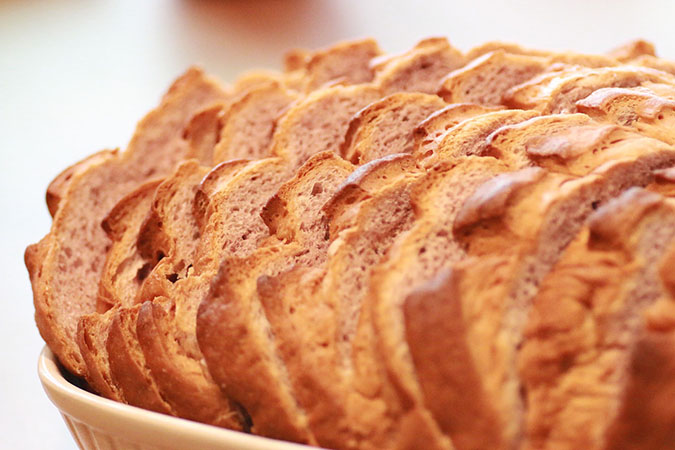
Need some inspiration for creative ways to use your wild sourdough starter? These 8 recipes will get you started.
- Basic Sourdough Sandwich Bread: For a versatile loaf that can be used for everything from PB&J to French toast, this easy recipe is difficult to beat. As a bonus, you’ll get a boost of protein from the flax content.
- Golden Sourdough Waffles: These waffles are so simple that they can quickly become part of your weekend routine. Sweet yet savory, they have a subtle tang at the end to improve their flavor complexity for the better.
- Fermented Sourdough Tortillas: Elevate taco night and use up excess sourdough starter at the same time with these stellar homemade tortillas. They’re guaranteed to disappear as quickly as you cook them.
- Sourdough Pretzels: Forget the frozen food aisle; these homemade pretzels are indulgent and easy to bake, so you’re likely to keep them on hand.
- Gluten-free Sourdough Crackers: You’ll get the crave-worthy crunch of a classic cracker with each bite, without upsetting the digestion of those with gluten sensitivities. Note: you’ll need a brown rice sourdough starter for this recipe.
- Sourdough Banana Bread: Simple to bake and heavy on banana flavor, this recipe might become your staple. As a bonus, you won’t have to wait for it to rise before baking.
- Sourdough Noodles: Just three ingredients (wild sourdough starter, whole-wheat flour, and egg yolk) is needed to make these rich noodles, and you don’t even need to own a pasta machine to form them.
- Sourdough Pizza Crust: For the times you have excess starter to use up, homemade pizza dough is the perfect option. It adds extra nuance to the flavors in your pizza, and it’s not any more difficult than standard dough recipes.
Maintaining a Wild Sourdough Starter
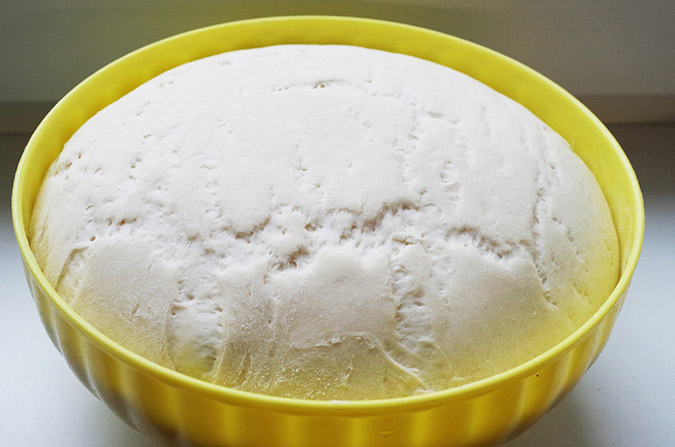
Once you have a thriving wild sourdough starter, you can keep it active by adding half a cup of water and flour every few days, and baking a loaf or two of bread when the level gets high. If you need a temporary break, you can “hibernate” your starter in the refrigerator for several weeks. When you’re ready to bake again, take the jar out a few days beforehand and feed it as before to wake up the bacteria.
Bonus Option: Buy a Premade Starter
If your interest in sourdough requires some instant gratification, you can speed up the process by buying a premade sourdough starter. Some brands use starters that date back to classic San Francisco strains so that you can achieve time-tested flavors with the first batch.
What Do You Think?
Have you ever used a wild sourdough starter? What tips can you offer to those who want to do the same? Let us know in the comments.
________________
The Grow Network is a participant in the Amazon Services LLC Associates Program, an affiliate program designed to provide a means for our team to earn fees for recommending our favorite products! We may earn a small commission, at no additional cost to you, should you purchase an item after clicking one of our links. Thanks for supporting TGN!

The Grow Network is a global network of people who produce their own food and medicine. We’re the coolest bunch of backyard researchers on Earth! We’re constantly sharing, discovering, and working together to test new paths for sustainable living—while reconnecting with the “old ways” that are slipping away in our modern world. We value soil, water, sunlight, simplicity, sustainability, usefulness, and freedom. We strive to produce, prepare, and preserve our own food and medicine, and we hope you do, too!
References
